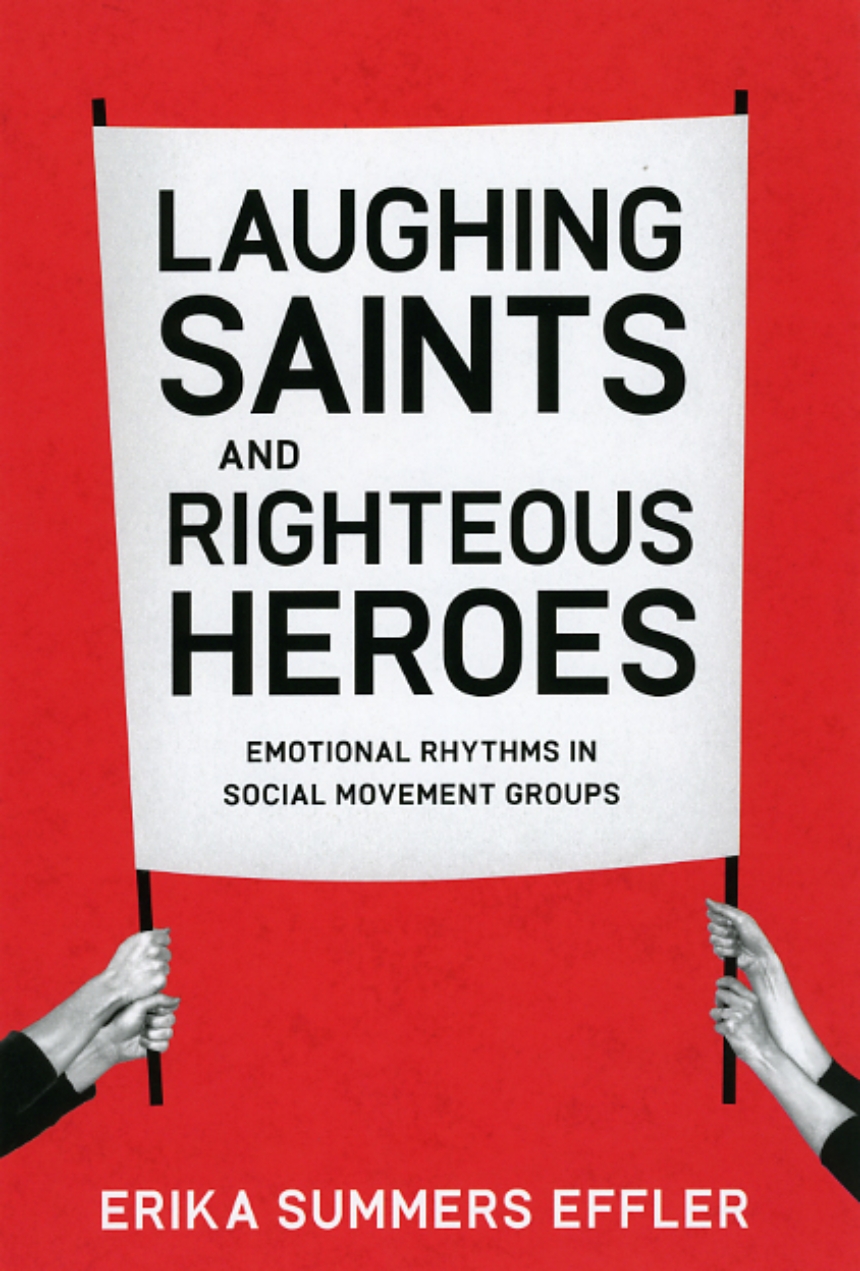Laughing Saints and Righteous Heroes
Emotional Rhythms in Social Movement Groups
Laughing Saints and Righteous Heroes
Emotional Rhythms in Social Movement Groups
To explore these questions, Erika Summers Effler undertook three years of ethnographic fieldwork with two groups: anti–death penalty activists STOP and the Catholic Workers, who strive to alleviate poverty. In both communities, members must contend with problems that range from the broad to the intimately personal. Adverse political conditions, internal conflict, and fluctuations in financial resources create a backdrop of daily frustration—but watching an addict relapse or an inmate’s execution are much more devastating setbacks. Summers Effler finds that overcoming these obstacles, recovering from failure, and maintaining the integrity of the group require a constant process of emotional fine-tuning, and she demonstrates how activists do this through thoughtful analysis and a lucid rendering of their deeply affecting stories.
256 pages | 4 line drawings, 4 tables | 6 x 9 | © 2010
Psychology: Social Psychology
Sociology: Social Change, Social Movements, Political Sociology, Social Psychology--Small Groups
Reviews
Table of Contents
Preface
Acknowledgments
1 Introduction: How Do Chronically Failing Altruistic
Social Movement Groups Persist?
A Glimpse of the Catholic Worker House
A Glimpse of STOP
Organization of the Book
Overview of the Chapters
2 Thrilling Risk Attracts Involvement
Draining Helplessness and Chaos at the Catholic Worker House
Distress at STOP’s Monthly Vigil
Toward a Theory of How Thrilling Risk Attracts Involvement
Conclusion
3 Recovering from Failure Carves Paths to Action
A Catholic Worker Story of Failure and Recovery
A STOP Story of Collapse and Recovery
Toward a Theory of How Recovering from Failure Carves
Paths to Action
Conclusion
4 Evolving Emotional Histories Shape Styles of Persistence
A Catholic Worker Story of Persistence
A STOP Story of Persistence
Toward a Theory of How Evolving Emotional Histories Shape Styles of Persistence
Conclusion
5 Conclusion: Toward a Fluid Theory of Social Organization
High Speed and Uneven Tempo at the Catholic Worker House
Low Speed and Even Tempo at STOP
Organization Emerges When the Pull toward Expansion Meets Obstacles
Stability Eventually Undermines Itself
The Relationship between Culture and Social Actors
Dynamics of Influence Across Actors
The Role of the Observer in the Perception of Stability
Assessing Outcomes
Conclusion
Methods Appendix
Working within the Limits of Observation
Investigating the Emotional Rhythm of Social Organization
Representing the Emotional Rhythm of Social Organization
References Index
